Walvisteuthis
Stubby hooksquid
K.S.R. Bolstad, Richard E. Young, and Michael Vecchione- Walvisteuthis rancureli (Okutani 1981)
- Walvisteuthis youngorum (Bolstad 2010)
- Walvisteuthis virilis Nesis & Nikitina, 1986
- Walvisteuthis jeremiahi Vecchione, Sosnowski & Young 2015
Introduction
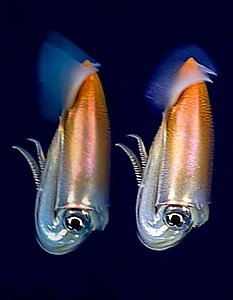
Figure. Walvisteuthis cf. youngorum, ROV video clips, 900 m depth. Note the characteristic fins and vertical, stationary orientation (NOAA OKEANOS EXPLORER Program). The video can be seen here.
Walvisteuthis species are small, muscular squids that appear to be common but are rarely captured by trawls. The maximum adult size recorded is a female of ML 150 mm (W. rancureli), and males have been observed to mature at ML ~80 mm. This genus is easily recognized by its short, broad shape and oval fins.
The type locality of the type species, W. virilis the temperate eastern South Atlantic, but additional Walvisteuthis specimens are known from the tropical North and South Pacific and from the tropical and south temperate Atlantic. Separation of species is difficult and there is some indication that more than the four presently recognized species may exist (Bolstad, 2010).
Diagnosis
An onychoteuthid with...
- oval fins, not drawn-out posteriorly (unique character within family).
- elongate-rhombic shaped vanes and short, blunt rostrum oriented perpendicular to tip of gladius (unique character within family).
- gladius visible beneath skin in dorsal midline.
- Primary occipital folds only.
Characteristics
- Arms
- Dorsal protective membranes of arms II and III greatly enlarged (ca. 2X) relative to their ventral protective membranes, and with long, well-defined trabeculae.
- Dorsal protective membranes of arms II and III greatly enlarged (ca. 2X) relative to their ventral protective membranes, and with long, well-defined trabeculae.
- Tentacular club
- A few marginal suckers present in subadults.
- Occipital region
- 3 primary occipital folds; large occipital membrane from fold 3 extends dorsally and curves to join occipital crest without forming a distinct fourth fold. Olfactory organ lies at posterior end of fold no. 2.No secondary occipital folds present.
- 3 primary occipital folds; large occipital membrane from fold 3 extends dorsally and curves to join occipital crest without forming a distinct fourth fold. Olfactory organ lies at posterior end of fold no. 2.No secondary occipital folds present.
- Head
- Beaks: Descriptions can be found here: Lower beak; upper beak.
- Beaks: Descriptions can be found here: Lower beak; upper beak.
- Mantle
- The dorsal ridge of the gladius is readily visible dorsally on an intact squid.
-
 Click on an image to view larger version & data in a new window
Click on an image to view larger version & data in a new window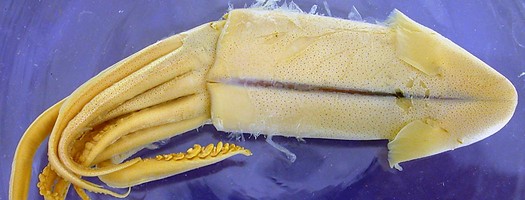
Figure. Dorsal view of the holotype of Walvisteuthis rancureli showing the muscles of the mantle to not join one another in the midline but fuse to the gladius (via the shell sac) making the gladius visible through the dorsal integument (when chromatophores are contracted). Photograph by R. Young.
- The dorsal ridge of the gladius is readily visible dorsally on an intact squid.
- Fins
- Oval with large anterior lobes; not drawn-out posteriorly; apical fin-angle approximately 180°.
 Click on an image to view larger version & data in a new window
Click on an image to view larger version & data in a new window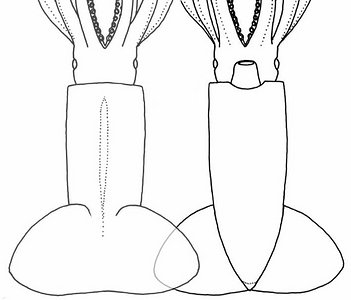
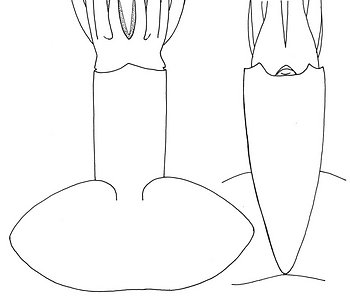
Figure. Dorsal and ventral views of two Walvisteuthis rancureli from different localities to show the shape of the fins. Left - Eastern Indian Ocean, female, 105 mm ML). Drawing from Bolstad, 2010. Right - Off New Caledonia, female, 87 mm ML. Drawing from Rancurel, 1970.
- Oval with large anterior lobes; not drawn-out posteriorly; apical fin-angle approximately 180°.
- Photophores
- Absent.
- Absent.
- Gladius
- Short, blunt rostrum directed perpendicular to posterior end of gladius.
- Gladius with elongate-rhombic shaped vanes; vanes with a sharp lateral angle.
 Click on an image to view larger version & data in a new window
Click on an image to view larger version & data in a new window
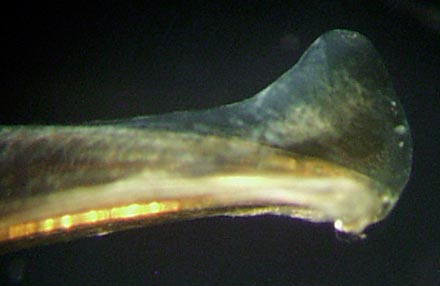
Figure. Left - Lateral view (top) and dorsal view (bottom) of the gladius of Walvisteuthis rancureli. (off New Caledonia, 87 mm ML), with an enlarged insert of the gladius rostrum and conus. Drawings from Rancurel, 1970. Right - Side view of the posterior end of the gladius of W. youngorum (Hawaii, 37 mm M) showing the rostrum and small conus. Photograph by R. Young.
Comments: comparison of species
The identification of W. virilis is a problem since it is only known from two mature and, probably, degenerating males. Therefore, this type species of the genus may remain in limbo until subadult specimens are found from the type locality (near the Walvis Ridge in the Southeast Atlalntic) that are either distinctly different, from the other known species, or not. If the latter, one of the known species will become a junior synonym.
W. youngorum is distinguished by the long, slender hooks with nearly straight necks (viewed in lateral profile) of the tentacular club compared to the more rounded hooks of W. rancureli and W. jeremiahi with curved necks. The latter two species are separated by statistically differences in three features (see Vecchione, et al., 1025):
| W. rancureli | W. jeremiahi | |
| Mean number (± s.e.) of club hooks | 25.7 ± 0.6 | 22.1 ± 0.7 |
| Mean number (± s.e.) of carpal suckers | 8.7 ± 0.3 | 7.1 ± 0.3 |
| Mean width (mm ± s.e.) of head | 27.7 ± 2.1 | 34.2 ± 1.8 |
Nomenclature
Walvisteuthis rancureli and W. youngorum were originally placed in a new genus, Callimachus, by Bolstad (2010) in her review of the Onychoteuthidae. She was skeptical that the peculiar Walvisteuthis virilis that had originally been placed in its own family, was an onychoteuthid. The latter had some very peculiar features and was only known from two mature males. Vecchione et al. (2015) in their description of Walvisteuthis jeremiahi, reviewed the position of the genus in light of new data and concluded that the peculiar features of W. virilis were due to morphological changes related to maturity and placed Callimachus as a junior synonym of Walvisteuthis.
Life History
Paralarvae of Walvisteuthis are known as small as 1.9 mm ML. The smallest paralarvae are extremely slender with a mantle width about 25% of the ML. Between this size and about 4-5 mm ML (Fig. A) they are easily recognized by their slender appearance and a distinctive elongate patch of large chromatophores along the dorsal midline. The eyes are dorsoventrally elongate and strongly bulge from the head. Club suckers are in two series, large (about the same size as the arm suckers) and prominent. At roughly 4-5 mm ML (Fig. B) the paralarvae begin a strong morphological change. They start to become relative broad, the eyes become hemispherical and the fins become much more prominent. At 7 mm (Fig. C) the squid is very broad for its length. Chromatophores are small and scattered but larger on the dorsal surfaces than ventral surfaces. On the ventral surface of the head the chromatophores are deep within the tissue and not readily visible in preserved specimens. By 12 mm ML the V-shaped funnel groove and the distinctive rostrum are present and hooks are beginning to form in the medial-ventral series on the club.

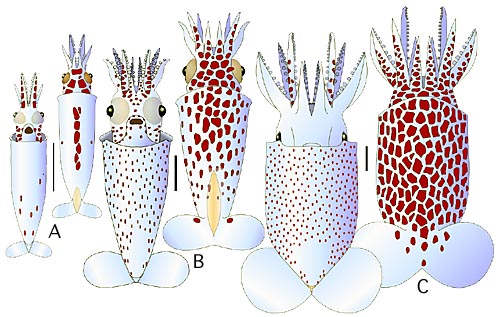
Figure. Ventral and dorsal views of growth stages of paralarvae of Walvisteuthis youngorum., Hawaii. A - Small, slender-stage paralarva, 2.4 mm ML. B - Paralarva in transition between slender and squat-body forms, 4.5 mm ML. C - Squat-stage paralarva, 7.0 mm ML. The scale bar is 1 mm. Drawings by R. Young.
References
Bolstad, K.S.R. 2010. Systematics of the Onychoteuthidae Gray, 1847 (Cephalopoda: Oegopsida). Zootaxa, 9626: 186 pp.
Nesis, K.N., and I.V. Nikitina. 1986. A New Family of Abyssal Squids (Cephalopoda, Oegopsida) from the South-eastern Atlantic. Zoologichesky Zhurnal, 65(1):47-54.
Rancurel, P. 1970. Les contenus stomacaux d’Alepisaurus ferox dans le Sud-ouest Pacifique (cephalopodes). Cah. O.R.S.T.O.M., ser. Oceanogr., 8: 3-87.
Vecchione, M., Sosnowski, A. and Young, R. E. 2015. Walvisteuthis jeremiahi n. sp. (Mollusca: Cephalopoda), an onychoteuthid squid from the Gulf of Mexico. Proceedings of the Biological Society of Washington, 128(2): 164-175. doi:10.2988/0006-324X-128.2.164
Title Illustrations

| Scientific Name | Callimachus youngorum |
|---|---|
| Location | Hawaiian waters |
| Specimen Condition | Preserved |
| Sex | Male |
| View | dorsal and ventral |
| Size | 65 mm ML |
| Collection | SBMNH 149643 |
| Type | Holotype |
| Image Use |
 This media file is licensed under the Creative Commons Attribution-NonCommercial License - Version 3.0. This media file is licensed under the Creative Commons Attribution-NonCommercial License - Version 3.0.
|
| Copyright |
©
Richard E. Young

|
| Scientific Name | Callimachus youngorum |
|---|---|
| Location | Hawaiian waters |
| Identified By | K. Bolstad |
| Sex | Male |
| View | ventral |
| Size | 65 mm ML |
| Image Use |
 This media file is licensed under the Creative Commons Attribution-NonCommercial License - Version 3.0. This media file is licensed under the Creative Commons Attribution-NonCommercial License - Version 3.0.
|
| Copyright |
©
Richard E. Young

|
About This Page
K.S.R. Bolstad

Auckland University of Technology
Richard E. Young

University of Hawaii, Honolulu, HI, USA
Michael Vecchione

National Museum of Natural History, Washington, D. C. , USA
Correspondence regarding this page should be directed to K.S.R. Bolstad at
kbolstad@aut.ac.nz
Page copyright © 2019 K.S.R. Bolstad, Richard E. Young , and Michael Vecchione
 Page: Tree of Life
Walvisteuthis . Stubby hooksquid.
Authored by
K.S.R. Bolstad, Richard E. Young, and Michael Vecchione.
The TEXT of this page is licensed under the
Creative Commons Attribution License - Version 3.0. Note that images and other media
featured on this page are each governed by their own license, and they may or may not be available
for reuse. Click on an image or a media link to access the media data window, which provides the
relevant licensing information. For the general terms and conditions of ToL material reuse and
redistribution, please see the Tree of Life Copyright
Policies.
Page: Tree of Life
Walvisteuthis . Stubby hooksquid.
Authored by
K.S.R. Bolstad, Richard E. Young, and Michael Vecchione.
The TEXT of this page is licensed under the
Creative Commons Attribution License - Version 3.0. Note that images and other media
featured on this page are each governed by their own license, and they may or may not be available
for reuse. Click on an image or a media link to access the media data window, which provides the
relevant licensing information. For the general terms and conditions of ToL material reuse and
redistribution, please see the Tree of Life Copyright
Policies.
- First online 23 June 2003
- Content changed 11 October 2015
Citing this page:
Bolstad, K.S.R., Richard E. Young, and Michael Vecchione. 2015. Walvisteuthis . Stubby hooksquid. Version 11 October 2015 (under construction). http://tolweb.org/Walvisteuthis/19957/2015.10.11 in The Tree of Life Web Project, http://tolweb.org/




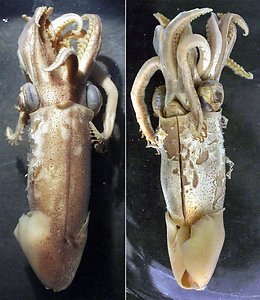
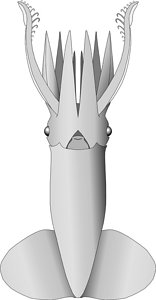




 Go to quick links
Go to quick search
Go to navigation for this section of the ToL site
Go to detailed links for the ToL site
Go to quick links
Go to quick search
Go to navigation for this section of the ToL site
Go to detailed links for the ToL site